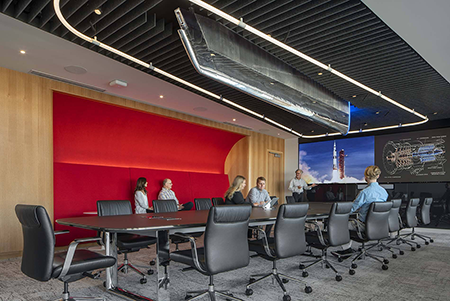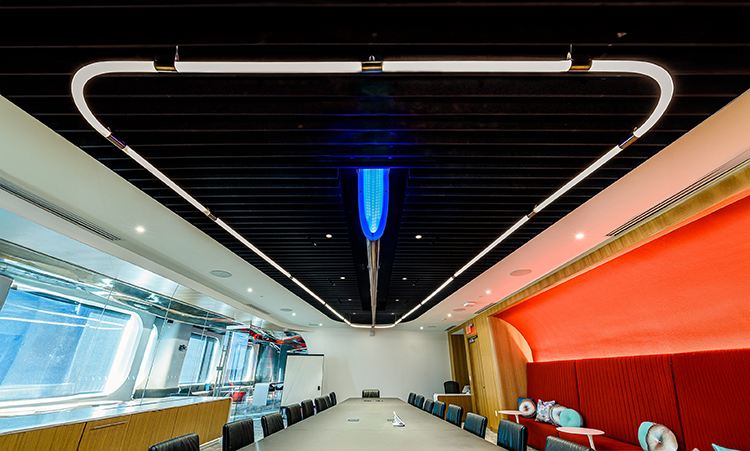In a rapid design cycle, our team designed and fabricated a one-of-a-kind luminous rail light for the Boeing Customer Experience Center in Renton, Washington. The light itself was specifically tailored to embody flight and blend with the existing conference room aesthetic and mounting requirements.
A rapid design cycle is an iterative approach to design that emphasizes speed and efficiency in developing prototypes, receiving feedback, and making improvements. We use this process most commonly in product development and user experience (UX) design. The goal is to quickly produce workable solutions, test them in real-world scenarios, and refine them based on feedback, leading to better products in shorter time frames.
Key Characteristics of a Rapid Design Cycle:

- Iterative Process: It involves repeated cycles of designing, prototyping, testing, and refining. This iterative process allows for continuous improvement based on user feedback and testing results.
- Speed: One of the core principles is to move quickly. This doesn't mean rushing through the design without thought, but rather efficiently progressing through the design process to make fast iterations possible.
- Prototyping: Creating prototypes—ranging from low-fidelity sketches to high-fidelity interactive models—is crucial. These prototypes are used for testing concepts with users, stakeholders, or within the development team to gather insights.
- User Feedback: Collecting feedback from users or stakeholders early and often is vital. This feedback informs changes and improvements, ensuring the final product meets user needs and expectations.
- Flexibility: The process is flexible and adaptable, allowing our designers to pivot or make significant changes based on testing outcomes, new insights, or changing requirements.
- Collaboration: Rapid design cycles often involve cross-functional teams, including designers, developers, product managers, and end-users, to ensure diverse perspectives are considered and to streamline the development process.
Phases of a Rapid Design Cycle:
- Plan: Define goals, target users, and requirements.
- Design: Create initial design concepts and prototypes.
- Test: Conduct usability testing with real users or stakeholders to evaluate the design's effectiveness.
- Analyze: Review feedback and testing results to identify areas for improvement.
- Refine: Make necessary modifications to the design based on analysis.
- Repeat: Go through the cycle again with the improved design.
 Advantages:
Advantages:
- Efficiency: Quickly identifies what works and what doesn’t, reducing time and resources spent on unviable ideas.
- User-Centered: Keeps the focus on the user's needs and preferences, increasing the likelihood of product success.
- Flexibility: Allows for rapid adjustments in response to new information or feedback without extensive backtracking.
Avid Labs rapid design cycle is a dynamic and user-focused approach that allows our team to quickly build and refine ours and our clients designs, leading to more innovative and user-friendly products.

